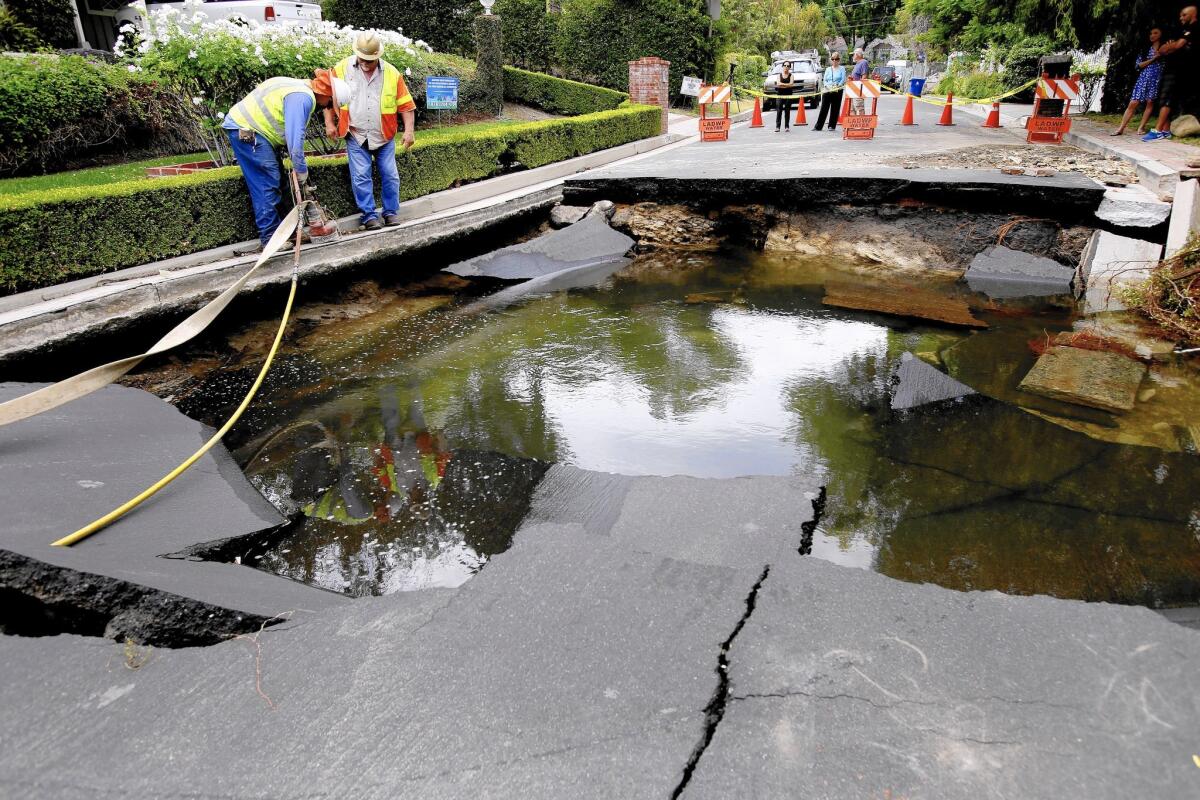Uptick in water line ‘blowouts’ across L.A. not unusual

- Share via
Los Angeles is seeing more high-energy water line “blowouts” that cause street damage this summer, according to data from the city’s Department of Water and Power.
Though the total number of pipe leaks of all types are stable, blowouts — a term used to describe a subset of pipe breaks that tear up and flood roads — are up from last year, with 34 in July and 24 in August. That compares to 15 in each month of last year, according to agency data.
Julie Spacht, water executive managing engineer for the agency, said blowouts are more common in the summer months. That’s because heat expands pipes and causes longer pipe cracks, which release more water and wreak more havoc on streets, she said.
“They look more spectacular, they tend to be more visible from the public’s point of view,” she said. A DWP spokesman said that taking a longer historical view, this year’s blowout uptick — including two in two days this week in Encino — is not unusual.
A massive water-main break in late July spewed millions of gallons of water onto UCLA’s campus and Sunset Boulevard, drawing attention to the city’s aging pipe infrastructure.
A water-main break in Encino on Friday left 100 customers without service, and came a day after another Encino water-main break Thursday that forced the evacuation of two homes.
DWP spokesman Joe Ramallo said total water pipe leaks have been dropping in recent years, and are now averaging between three and four a day. Between Sept. 1 and Sept. 11, there were 36 leaks, he said.
Generally, water pipes spring more leaks in the colder months between December and February, Spacht said. But those tend to be smaller and less noticeable, she added.
DWP data show that those cooler months often tally more than 100 pipe ruptures, compared to roughly 60 to 80 total monthly leaks the rest of the year.
soumya.karlamangla@latimes.com
More to Read
Sign up for Essential California
The most important California stories and recommendations in your inbox every morning.
You may occasionally receive promotional content from the Los Angeles Times.














